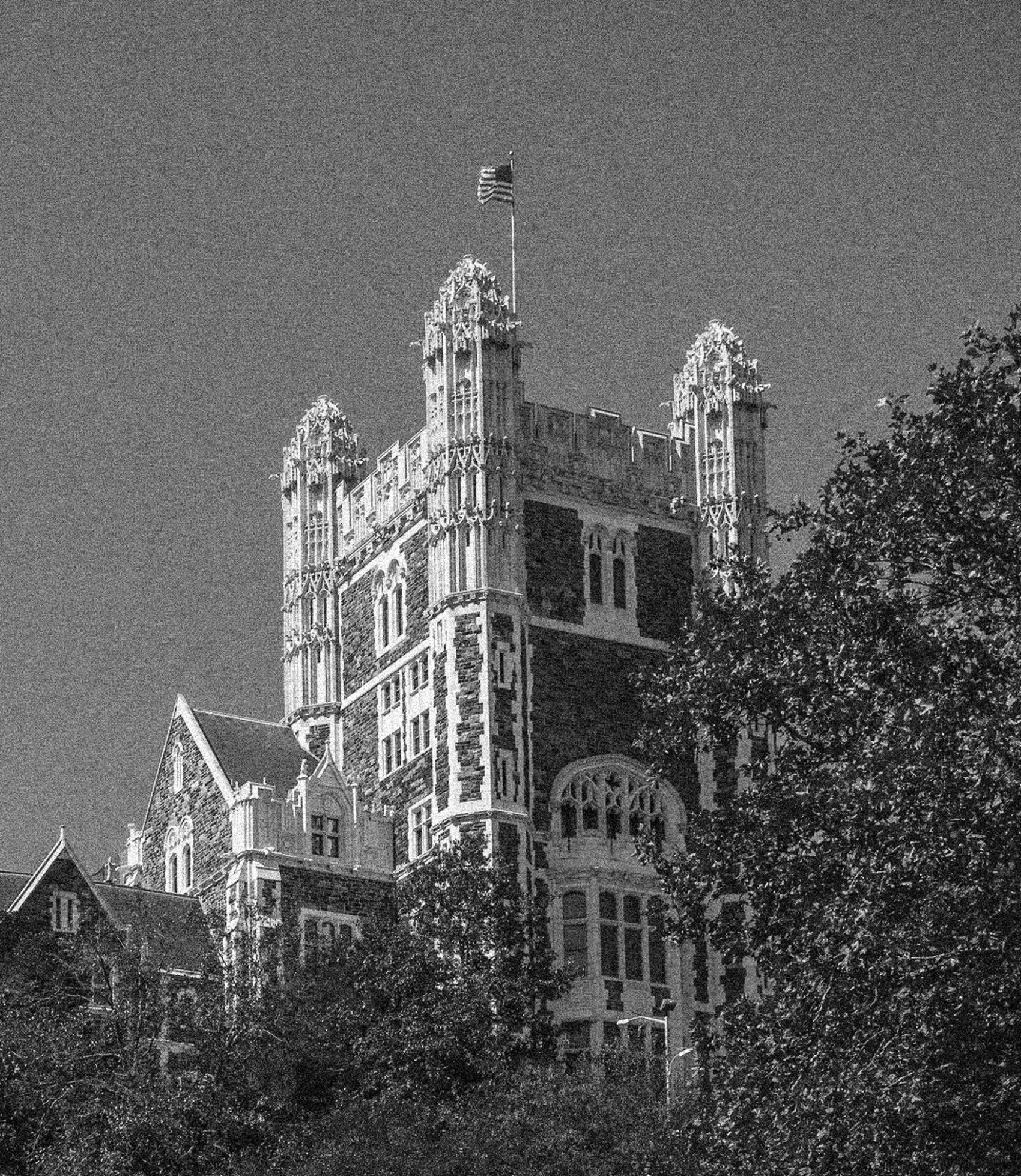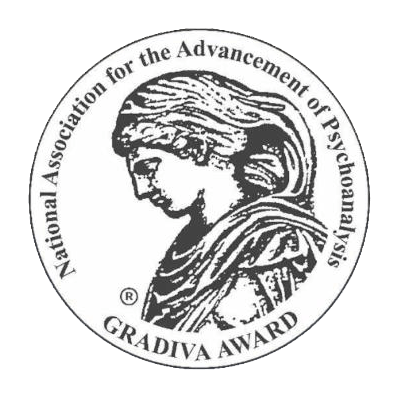Red Scare at City College
by Iris Fodor

Today, as I watch the daily news in disbelief, as our president issues and signs oppressive executive orders and attempts to suppress academic freedom at colleges and universities,
I am reminded of my undergraduate days at City College (known as CCNY) in the mid-1950s and the witch hunts of the McCarthy era—a reign of terror labeled the “Red Scare.”
In the 1950s, CCNY was tuition-free. The students, mainly from New York City’s working-class families, commuted long distances to the college daily by bus and subway. I was part of the second class of “girls” to enter this formerly all-male enclave.
The CCNY campus, which was often called the “Acropolis” of New York, consists of five majestic Gothic buildings, complete with turrets, hundreds of grotesque gargoyles, and a stone tower, amidst city streets atop a hill in Harlem. One enters the campus through a huge arch. The grey terracotta stone buildings encircle a large quad. I loved the old Gothic buildings, which were considered replicas of buildings at Cambridge University in England. (A taste of Ivy for the urban poor!)
The shadow over my childhood in the Bronx in the 1940s was my mother’s continuing angst about her Russian-born parents who had returned to the Soviet Union to partake in the building of Stalin’s Soviet utopia, never to return to America. Most evenings during my last year of high school, my parents and I sat in horror as we listened to the radio re-broadcasting the trial of the Rosenbergs, the so-called “commie spies” who had given our secrets to Russia, led by the fiery prosecuting attorney Roy Cohn.
That year, I joined with many others, appalled by the persecution of the Rosenbergs, marching in front of the courthouse waving “Free the Rosenbergs” placards. In my first year of college, I took part in the sad memorials at CCNY after they were both electrocuted. My mother was particularly upset by the trial and later executions. She confided in me that she imagined her father being similarly persecuted. He had been an engineer working for the government before he returned to Russia. By then, I realized in this “red scare” time how dangerous it was to be considered a communist or even to express progressive views.
When I began college, Marxist ideas and left-wing idealization and the glorification of the Soviet experiment were still in vogue among many of CCNY’s students, who often came from left-leaning Eastern European families. By then, when my mother learned firsthand from her relatives of the terror so many experienced in Stalin’s times, she no longer adhered to the beliefs that had caused such hardship and tragedy to her family and the Soviet people. My mother worried about my brother’s and my safety and future, insisting that we were never to reveal our family’s progressive beliefs or my grandparents’ return to Russia.
Despite having to hide my family’s politics, and wanting to be politically engaged, I still sought out other affiliations. At City College, we were all commuters and the huge cafeteria became the favorite place to hang out, despite the “bad food” smell and the trays of leftovers and dirty dishes on the tables. These tables were gathering places for political discourse. It was a mostly male world where student politicians gathered to argue political ideology and action.
There was a table for the Marxist discussion club, one for the Leninists who supported Stalin, and a dissenting Trotskyite table, among others. (There were many fights between these dissenting tables.) In this post-war era, given my knowledge of the injustices and horror of communist Russia, and heeding my mother’s orders, I shied away from these still-enamored Marxists. I searched for other groups to join.
I turned to the Young Democrats and we became active in the presidential campaign for Adlai Stevenson, who was running against the Republican Eisenhower. I never spoke to them of my family’s background. I embraced these Democrats in their disappointment following Stevenson’s loss. We all vowed to try harder next time.
While we were distracted by the election, the country took a bad turn. The cold war between the US and Russia was heating up. The House Un-American Activities Committee, led by Joseph McCarthy, emerged full-throttle to root out communists in our country. This became our own “enemies of the people” campaign that mirrored what Stalin had done in Russia in the 1930s. Their major targets were leftists who were labeled as red subversives—intellectuals, teachers, writers, and most of all Hollywood filmmakers, screenwriters, and actors. They were subpoenaed by the HUAC and asked to name names of fellow collaborators. Many cooperated with the committee; many others refused and were blacklisted from the film industry. These “blacklisted commies” were fired or had to flee the country. Among them, Charlie Chaplin was a particular target. He left the U.S., never to return. The committee hearings were everyday news stories, the question “Are you or have you ever been a communist?” jumping from the headlines of the latest victims. I became even more fearful of anyone finding out about my family.
Next, the McCarthy committee turned to the colleges and universities to root out the professors who were indoctrinating the young with subversive ideas. In 1952 City College was singled out by the HUAC. While I heard Adlai Stevenson speak during a visit with a friend at Harvard, we at CCNY (which in those days was considered the Harvard for the poor) were treated to visits by Roy Cohn, his disciple. Roy Cohn was already infamous as the lead prosecutor of the Rosenbergs. He later became a mentor to Donald Trump, and was his longtime personal lawyer in the 1970s. It is reported that it was Roy Cohn who taught Donald Trump how to exploit power, instill fear, attack, and never apologize.
Roy Cohn brought his style of aggressive attacks to our campus. I remember an unattractive, thin man, agitated and angry, standing on a platform, holding a megaphone, giving speeches to my fellow students in the quad, yelling at the top of his lungs, “The red sea of Communism is spreading over us all!” as he grimaced and pointed below to the crowd of booing students. As one of the few girls in this crowd, I stood among them, appalled, but silent and terrified.
Not content with sending such speakers, the HUAC began investigating the “red” faculty and demanded the membership lists of the “communist student organizations” at CCNY, among them the Marxist Discussion Club. At the time, I was vice president of the student council. Despite my fears, I worked with others who had been galvanized by Cohn’s rants to mobilize the campus to oppose turning over the student membership lists and to support our besieged faculty.
The college president at the time, Buell Gallagher, was cooperating with the HUAC. We staged sit-down strikes outside his office, bringing pillows and blankets from home for our night protests. This was my first experience of political activism. I stopped being so scared and became energized. Our student journalists supported our collective action. Many of us stopped going to class, made posters, and gave speeches. Some students brought guitars and we sang protest songs (my favorites being Woody Guthrie’s “This Land Is Your Land” and “Union Maid”). Many of our favorite professors were purged and fired, as well as some administrative staff. Our basketball stars were also at risk; they had been the country’s champions.
Through our student activism and continuous sit-down strikes, we managed to stop the administration from turning over the membership lists of the so-called “communist” student organizations to the McCarthy committee. All in all, 150 were questioned. By 1958, fifty-seven faculty and staff were fired, resigned, or were blacklisted. Most could not get other positions in those times.
As I am overwhelmed with what is happening now to our country, I wonder what sort of activism would work now to stop the spike of “enemy of the people” injustice. I am fearful that the pardoned “Jan. 6 mob” are now free to seek revenge. Together we must continue to channel our anger and outrage to sweep Trump and his enablers from power. We must remember that we’ve been here before.
- Iris Goldstein Fodor, PhD, is Professor Emerita in the Department of Applied Psychology at New York University. She is a clinical psychologist and Gestalt therapist in New York known for her teaching and writings about sociocultural issues linked to mental health, feminist therapy, and advocacy for an integrative approach to therapy. Iris is also a social activist and photographer who has collaborated on digital storytelling projects with adolescents in Dharamshala, India, South Africa, and Peru. A recent focus of hers is on experiential writing, and she is a graduate of the New Directions writing program. She is now completing a memoir with poems, photos, and stories from her Bronx childhood.
- Email: ief1@nyu.edu
ROOM is entirely dependent upon reader support. Please consider helping ROOM today with a tax-deductible donation. Any amount is deeply appreciated. |





